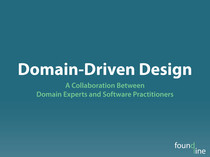Last week on The Browser I was talking (again) about free/open source software and open standards. Jonathan Butler (the host) asked what my thoughts were about my iPod touch which is proprietary hardware and software. Paraphrasing my answer, I said that Apple has created a killer product and a big part of this is their complete control over the platform. However, long-term innovation can only be sustained by free/open source software and open standards.
I was thinking about that question after the show when I remembered something: there’s a ton of free/open source code in the iPhone and iPod touch. These devices run a version of OS X, parts of which come from the free/open source FreeBSD operating system. Safari, the device’s web browser, uses the free/open source web browser engine WebKit. Contrary to popular belief, many free/open source software licenses allow you to make proprietary derivative works. Apple does contribute software back to the free/open source community even though they are not always legally required to.
My point is not to praise Apple’s contributions. Likely these contributions are beneficial to them. If they branch a free/open source project and their branch strays too far from the original, they will have a hard time incorporating new features from these projects. Linus Torvalds (credited with developing the Linux kernel) recently commented on Microsoft’s contribution of code to the Linux kernel:
I agree that it’s driven by selfish reasons, but that’s how all open source code gets written! We all “scratch our own itches”. It’s why I started Linux, it’s why I started git, and it’s why I am still involved. It’s the reason for everybody to end up in open source, to some degree.
Apple and other proprietary software companies (maybe even Microsoft) are starting to demonstrate an interesting symbioses with free/open source software. While I do think that free/open source software is better for “consumers” and beneficial to society in general I don’t think any of that is a necessary argument in support of free/open source software. I think that it is an approach that will ultimately create more value and be better at sustaining innovation than proprietary software. Smart software companies are starting to recognize this. Apple has reduced their upfront and ongoing research and development costs by tapping into free/open source software, even if the products they deliver to customers are proprietary. They also seem to understand the value of releasing some of their own software and modifications under free/open source licenses: they will get back more than they put in and the reward is greater than the risk.




